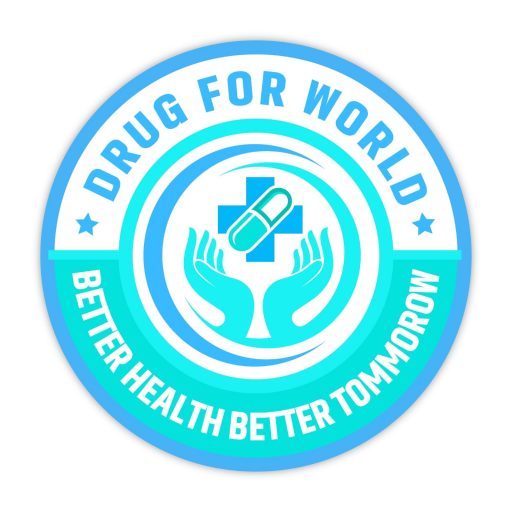Cancer is a word that can instantly strike fear, bringing images of difficult treatments and uncertain futures. For decades, scientists and doctors have poured their energy into fighting this complex and varied disease, leading to important but incremental progress. But in recent years, a series of groundbreaking advancements have emerged, promising a Breakthrough Cancer Treatment This breakthrough moment in oncology is fueled by cutting-edge technologies, revolutionary drugs, and innovative therapies that aim not just to treat, but to potentially cure certain types of cancer or dramatically improve patients’ quality of life.
Understanding the Challenges in Cancer Treatment
Before diving into specific breakthroughs, it’s essential to understand why cancer has been such a challenging disease to treat. Cancer isn’t a single illness; it’s a group of diseases involving abnormal cell growth with the potential to invade or spread to other parts of the body. Traditional treatments like chemotherapy, radiation, and surgery have been the mainstays of oncology, but they often bring significant side effects and aren’t always effective.
A Shift in Cancer Treatment: Precision Medicine
One of the most promising areas of innovation in cancer treatment is precision medicine, which aims to tailor treatments to an individual’s unique genetic makeup and the genetic mutations of their cancer. Instead of a one-size-fits-all approach, precision medicine enables doctors to select therapies that are most likely to work for specific patients based on molecular insights.
1. Genomic Testing and Personalized Therapy
Advances in genomic testing allow scientists to identify specific mutations and characteristics of each patient’s cancer cells. This testing guides doctors in choosing targeted drugs that are effective against particular mutations. Drugs like imatinib for chronic myeloid leukemia and trastuzumab for HER2-positive breast cancer are examples of this approach’s success, offering patients targeted and often less toxic treatments.
2. Immunotherapy: Harnessing the Body’s Immune System
Perhaps one of the most exciting breakthroughs in recent years is immunotherapy. While the concept of using the body’s immune system to fight cancer isn’t new, modern immunotherapy has unlocked ways to make this approach viable and effective.
- Checkpoint Inhibitors
Immune checkpoint inhibitors, like pembrolizumab and nivolumab, have transformed the treatment of cancers such as melanoma and lung cancer. These drugs work by blocking certain proteins that prevent immune cells from attacking cancer cells, allowing the immune system to recognize and destroy these cells more effectively.
- CAR-T Cell Therapy
CAR-T cell therapy represents a more advanced form of immunotherapy. In this treatment, a patient’s T cells (a type of immune cell) are genetically modified to better recognize and attack cancer cells. CAR-T cell therapy has shown incredible results, particularly in treating blood cancers like leukemia and lymphoma, with some patients experiencing complete remission.
- Cancer Vaccines
Cancer vaccines are intended to treat cancers that already exist, as opposed to conventional immunizations that prevent infections. While still largely experimental, these vaccines aim to stimulate the immune system to recognize cancer cells as threats. The development of a personalized cancer vaccine has shown promise in treating advanced melanoma, leading to a reduction in recurrence rates.
The Power of Artificial Intelligence in Cancer Treatment
1. Early Detection and Diagnosis
AI-powered algorithms have shown potential in detecting cancers at earlier stages. For example, AI models have demonstrated the ability to identify early-stage breast cancer in mammograms more accurately than human radiologists. Early detection often means better outcomes, as cancers are more likely to be treatable when caught early.
2. Treatment Optimization
AI is also being used to help personalize treatments. By analyzing a patient’s data alongside data from millions of other cancer patients, can help oncologists predict how well certain therapies will work, enabling them to tailor treatment plans more effectively. This strategy seeks to increase effectiveness while reducing needless side effects.
Revolutionary Drug Developments and Combination Therapies
Another area of breakthrough cancer treatment is the development of new drugs that target cancer cells more precisely than ever before. Combination therapies—using more than one treatment at a time—are also showing promise, as they can tackle cancer from multiple angles and may prevent the development of resistance.
1. PARP Inhibitors
PARP inhibitors, such as olaparib, are a class of drugs that have shown effectiveness in treating cancers associated with BRCA mutations, like ovarian and breast cancer. By blocking a protein that cancer cells rely on to repair themselves, these drugs are particularly effective for patients with these mutations, offering new hope for what were once difficult-to-treat cancers.
2. Targeted Radiotherapy
Another promising approach is targeted radiotherapy, which involves delivering radiation directly to cancer cells while sparing healthy tissue. Advances in medical imaging and precision techniques have allowed doctors to target tumors with greater accuracy, reducing side effects and improving outcomes.
The Future of Cancer Treatment: Hope on the Horizon
With each new breakthrough, hope grows for patients, families, and the healthcare community. Many of these advances are still in their early stages or only available in clinical trials, but they offer a glimpse into a future where cancer may no longer be the life sentence it once was. The journey is far from over, but these breakthroughs suggest that, one day, we might live in a world where cancer can be managed more like a chronic condition than an inevitable end.
In recent years, the field of cancer treatment has seen remarkable advancements. From immunotherapy to targeted therapies, these breakthroughs bring new hope to patients and their families. This article explores the latest innovations in cancer treatment, answering common questions about their impact, effectiveness, and what they mean for the future of cancer care.
FAQs
1. What is a breakthrough cancer treatment?
A breakthrough cancer treatment refers to an innovative approach or technology that significantly improves outcomes for patients. These may include treatments that are more effective, safer, or that work where traditional therapies have failed.
2. What are the latest advancements in cancer treatment?
Recent advancements include immunotherapy, CAR T-cell therapy, and precision medicine. These treatments target cancer cells more effectively, often with fewer side effects, by boosting the body’s immune response or tailoring treatment to individual genetics.
3. How does immunotherapy work in cancer treatment?
Immunotherapy stimulates or harnesses the immune system to recognize and attack cancer cells. By enhancing the immune response, these treatments can slow the growth of cancer or even eliminate it, offering a promising option for many cancer types.
4. What are the potential side effects of new cancer treatments?
While new treatments often have fewer side effects than traditional chemotherapy, some may still cause fatigue, skin reactions, or flu-like symptoms. Side effects vary by treatment type and individual patient response.
5. Who can benefit from these breakthrough treatments?
Many breakthrough treatments are available for patients who have not responded well to traditional therapies or those with specific types of cancer, such as melanoma or lung cancer. Consult with an oncologist to determine eligibility.
6. Are these new treatments widely accessible?
While some breakthrough treatments are available, others are still in clinical trials and may have limited access. However, as research progresses, accessibility is expected to increase over time.
7. How do these breakthroughs impact survival rates?
Recent breakthroughs have shown promising results in extending survival rates and improving quality of life for cancer patients. Some patients have experienced long-term remission thanks to these innovative therapies.
8. What does the future look like for cancer treatment?
The future of cancer treatment is bright, with ongoing research focused on improving precision and minimizing side effects. New therapies and personalized medicine approaches aim to offer hope for a cure and effective long-term management of cancer.
These revolutionary therapies are changing the face of cancer treatment, bringing hope, and making it possible for many patients to envision a brighter, healthier future.




